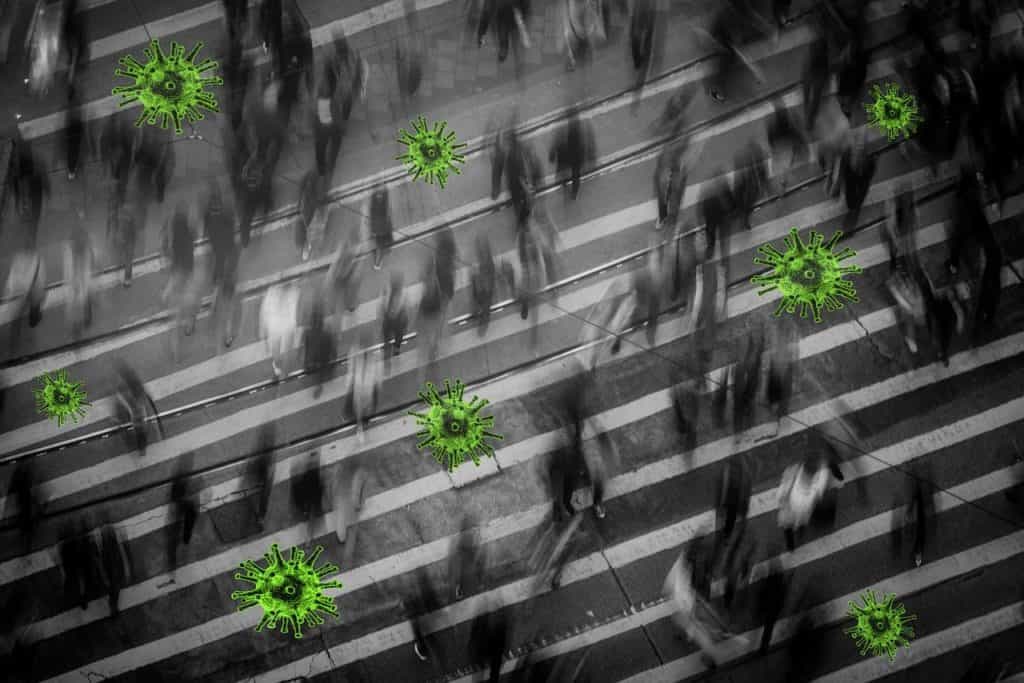Health Ministry reported the recovery of more than 1.20 million COVID-19 patients. How far is India from herd immunity to control the spread of Coronavirus?
Recovery Rate Shows a Positive Trend
Rajesh Bhushan, Secretary, Ministry of Health, reported that around 11,86,203 patients have recovered from COVID-19. He appreciated the combined efforts of the Union, state government, doctors, and other medical staff. Further, he noted the improvement in recovery from 7.85% in April to 64.4% in July. Also, 16 states have recovery rates more than the national average, including Delhi, which has a recovery rate of 88%.
Further, Rajesh Bhushan added that effective clinical management had decreased the fatality rate from 3.33% in June to 2.21% in July, making it the lowest in the world. He also mentioned the increased testing capacity as the country is currently conducting 324 tests per 10 lakhs population per day. However, he ruled out herd immunity as a strategic option considering the size and population of India.
On the development of the COVID vaccine, he said that three vaccines are in phase 3 trial. These are one each in the UK, US, and China. However, India has candidates in phase 1 and 2.
Herd Immunity Not an Option for a Country Like India: Government
Having crossed 18 lakh cases, the centre confirmed that the country could not depend on the strategy of ‘herd immunity’ to beat the pandemic. It is a situation where the population develops immunity to the disease either through vaccine or recovery, with a significant proportion of the population that recover after contracting the disease.
The hope for herd immunity grew when 57% of people surveyed in Mumbai slum were asymptomatic after recovering from Coronavirus. Bhushan explained that herd immunity is not a choice for such a vast population. It is an only high-cost outcome where several people would have to be infected and hospitalised, with several deaths in the process. The health ministry said that adopting COVID appropriate behaviour is the right approach.
Dharavi Slum Might Have Reached Herd Immunity
Jayaprakash Muliyil, chairman of the Scientific Advisory Committee of India’s National Institute of Epidemiology, said that Dharavi might have reached herd immunity. He noted that the serological survey conducted in Asia’s biggest slum revealed that six out of ten people have antibodies.
The survey of 6936 people conducted by municipalities and Tata Institute of Fundamental Research confirmed a steep drop in infections in slums when cases across India surged. The study suggested two possibilities, one credited the outcome to the intensive containment measures implemented by the officials and the other to strict quarantine and door to door screening facility, which kept the mortality rate low. However, it also explained that the decrease in current cases could be due to the efficient spread of the Coronavirus in Dharavi.
Fall in New COVID-19 Cases in Delhi Due to Herd Immunity?
With 1,37,677 infected, Delhi has become one of the worst affected cities in India. A serosurvey conducted in Delhi found that 23% of the samples tested had antibodies for the virus. The survey aimed at detecting antibodies (a protein produced to fight external organisms) in people having suffered from Coronavirus. This means that these 21000 people had the infection at some point. However, Shahid Jameel, a virologist warned against the interpretation of the scientific findings.
Experts state that deciding the protection against the virus based on the serological survey is problematic. Health experts say that the serosurvey is for a limited purpose only. It determined the presence of infection (in past or present) through the presence of antibodies. However, it does not signifies the quantity and the presence of neutralizing antibodies that are essential to fight the virus.
Shashidhara, the biologist at IISER Pune, said that it’s too early to conclude permanent protection as Coronavirus can still undergo mutations. Moreover, herd immunity applies to a closed population and with a uniform infection level. Also, the proportion of the population infected by COVID-19 before reaching herd immunity is unknown.
In all, scientists and health experts have warned about drawing a conclusion based on the survey. They consider it not only premature but also mislaid.









